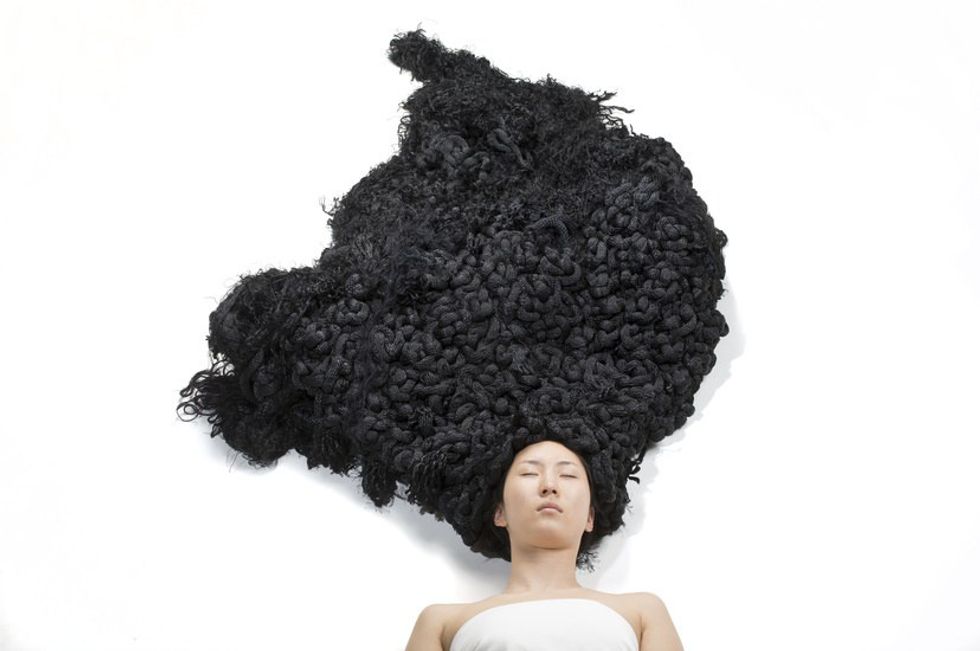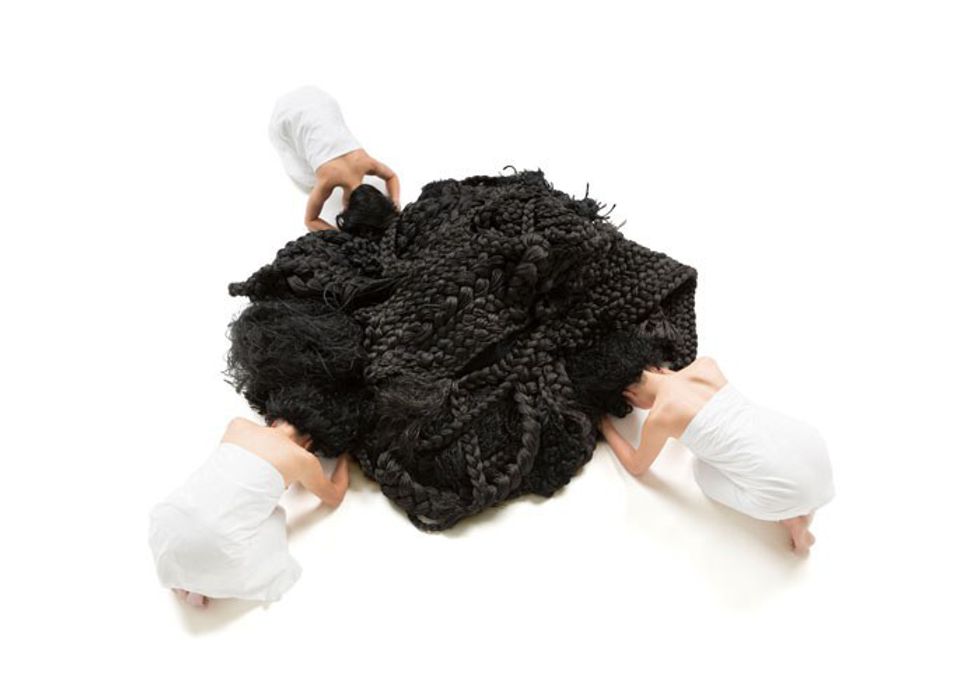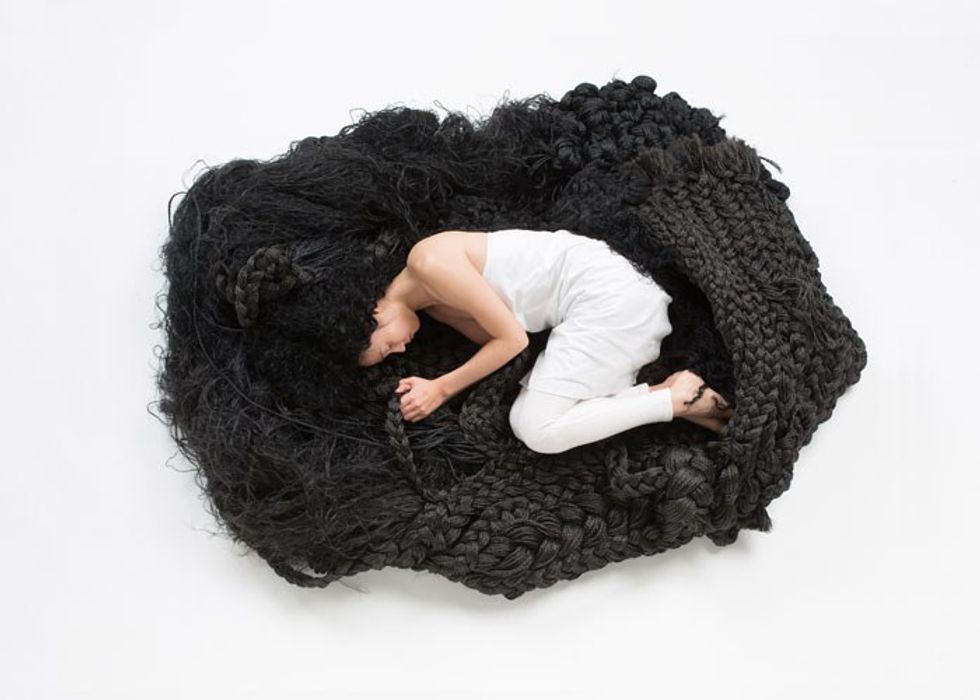Through a series of photographs depicting wearable sculptures, Yuni Kim Lang interprets her Korean culture and societal norms through the use of “gache” wigs.
Gache wigs were traditional Korean hair pieces worn by women who held a high status in society. The bigger and heavier they were, the better they were considered to be. Lang made the gache wigs with synthetic plastic polypropylene ropes. She made the gate sculptures wearable like a wig. Within her work, Yuni Kim Lang questions her cultural identity. Each picture shows different shapes and three-dimensional masses formed by the gache wigs. A woman is seen wearing the gache wig sculptures within most of the images. A majority of these shapes consist of organic shapes. Color plays a role within the art work through its value. Specifically, the background is white, which may be referred as a tint. Meanwhile, the gache themselves are black, which is referred to as a shade. There is little to no real intensity, in terms of color, within the piece. When looking at the art work, the angle of the view is mostly as if one were looking down from a high or natural angle. Comfort Hair is for the most part asymmetrically balanced. Comfort Hair may communicate to groups or ideas at a larger scale. People who struggle with their cultural identity may relate to her art work and its significant meaning. Yuni Kim Lang made these gache wigs big as a way to express how powerful they were considered to be. As someone who was born in Korea, raised in China, and now works and lives in the United States, Lang dived into her cultural identity with Comfort Hair. In many cultures, not just Korean, hair has always been seen as a symbol of power and identity.
The name, Comfort Hair, is also referencing the "Comfort Women." These were women (usually Chinese and Korean) that were taken by the Japanese Imperial Army, during the events of World War II, and were forced into sexual slavery. Some of the images depicted with Comfort Hair show the gache wig forming a nest, while another shows three generations all connected through their gache wig. Her work shows her cultural identity and how the gache wigs helped her identify with her culture.
Overall, Yuni Kim Lang’s Comfort Hair consist of a series of images that accurately depicts Lang’s cultural identity and how she longs to learn more. She successfully shows her Korean culture through the gache wig. The meaning and significance behind the wigs are accurately shown. The huge size of the gache wig tells the viewer how powerful the wigs are considered to be. Her art appeals to many people who have had difficulty in identifying their culture. She successfully addresses these issues and ideas throughout Comfort Hair. Through the use of her gache wig sculpture, made out of synthetic plastic polypropylene ropes, Yuni Kim Lang conveys a message about her Korean background and how she identifies with her culture.




















